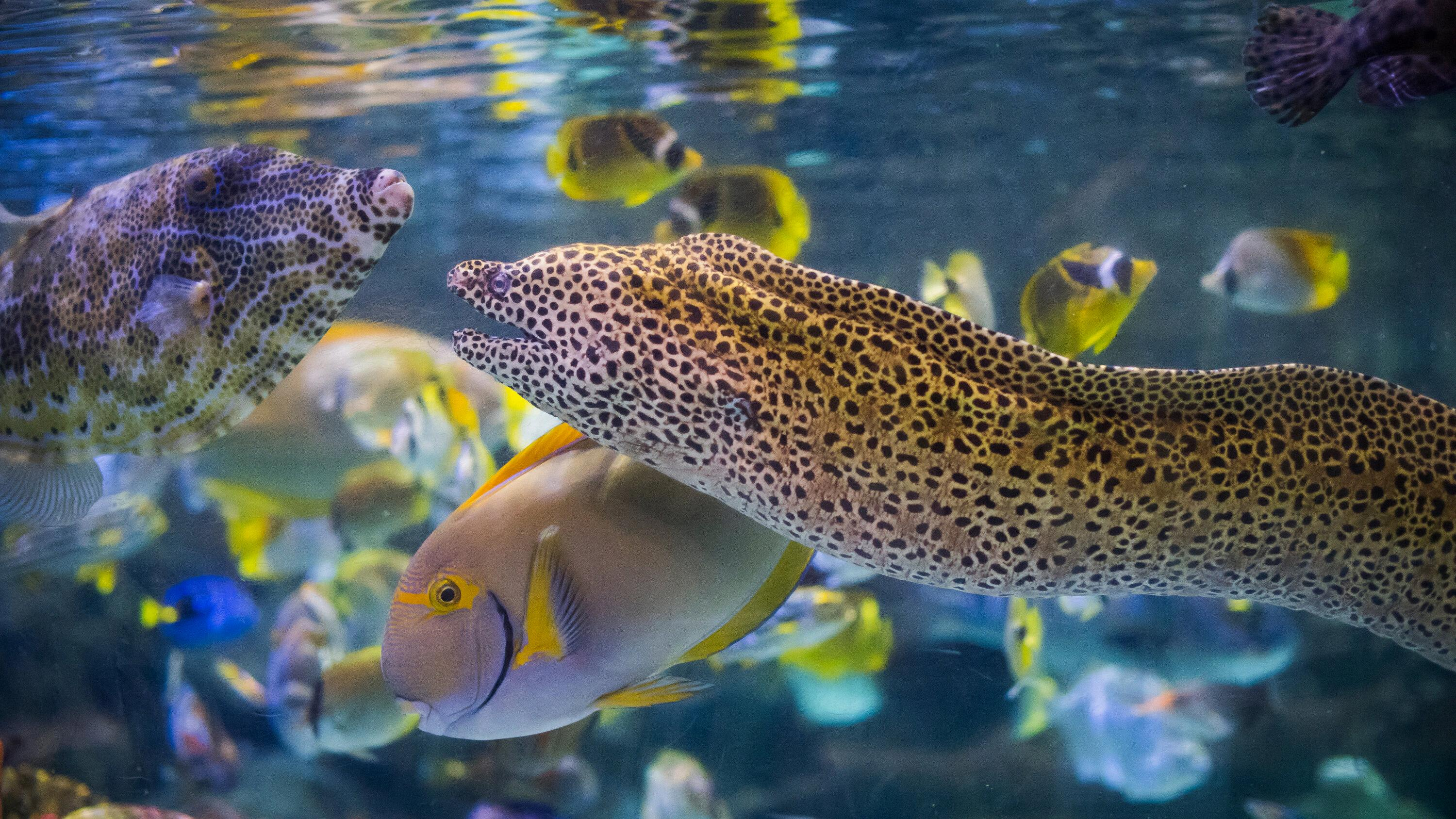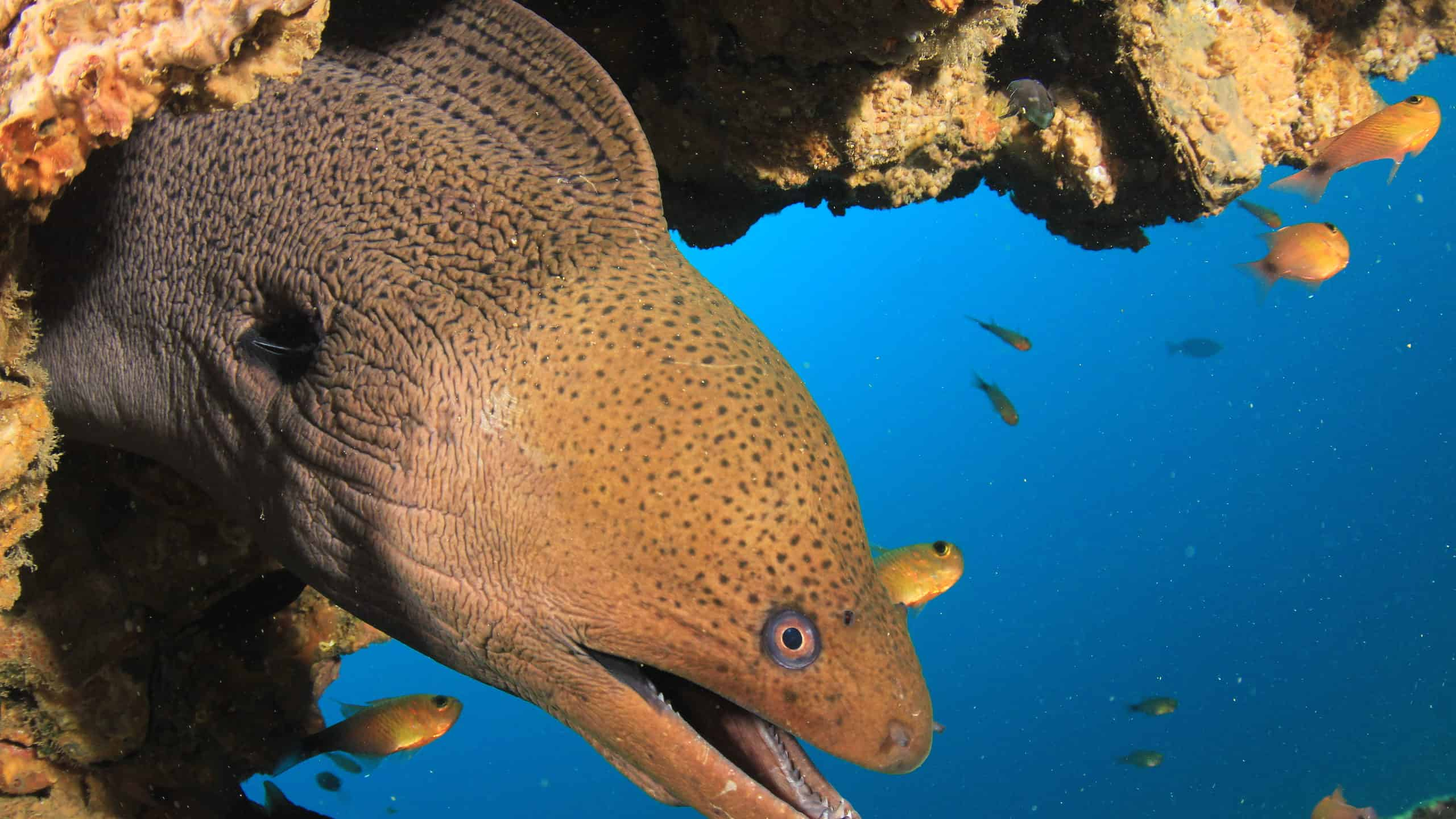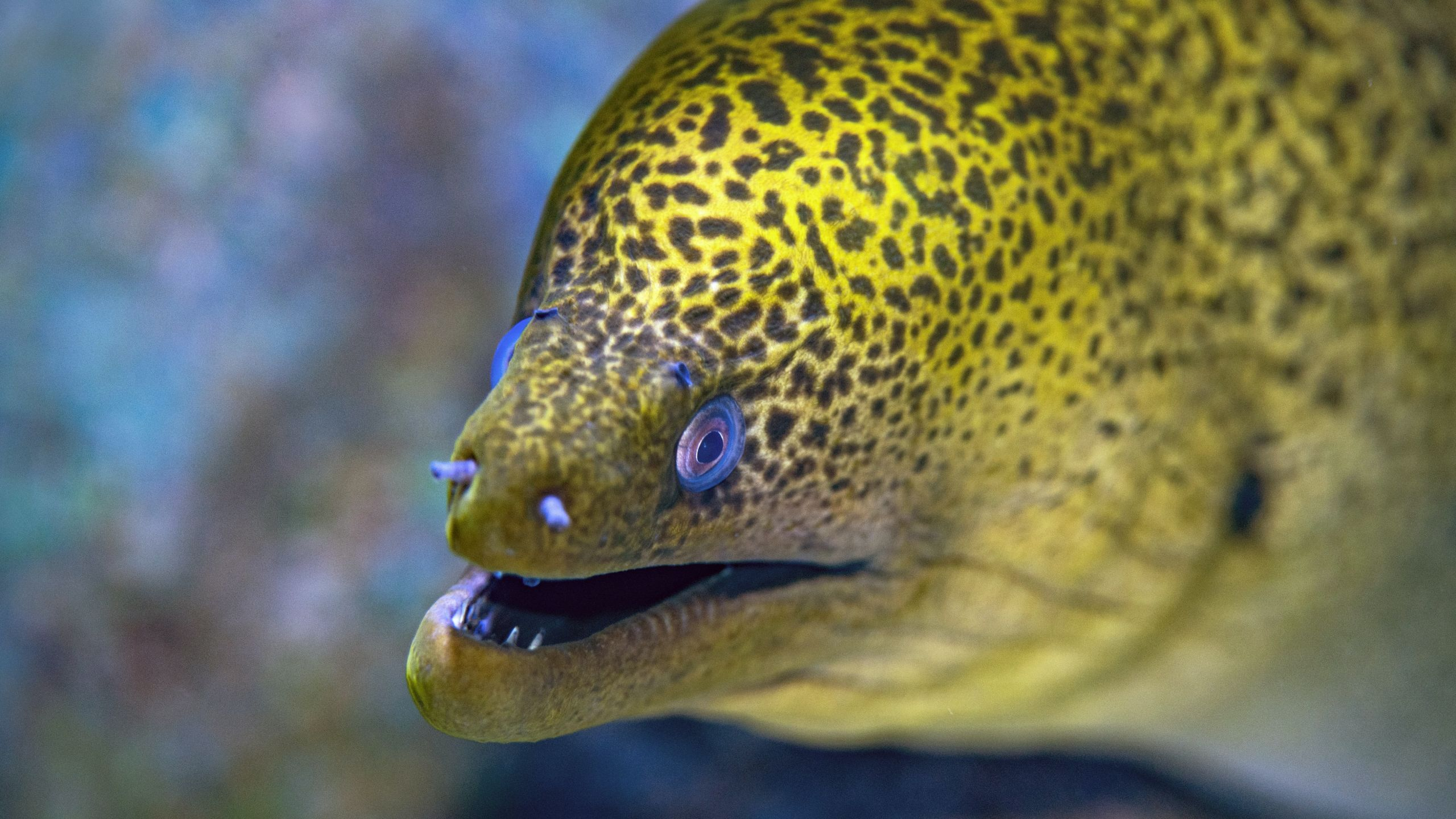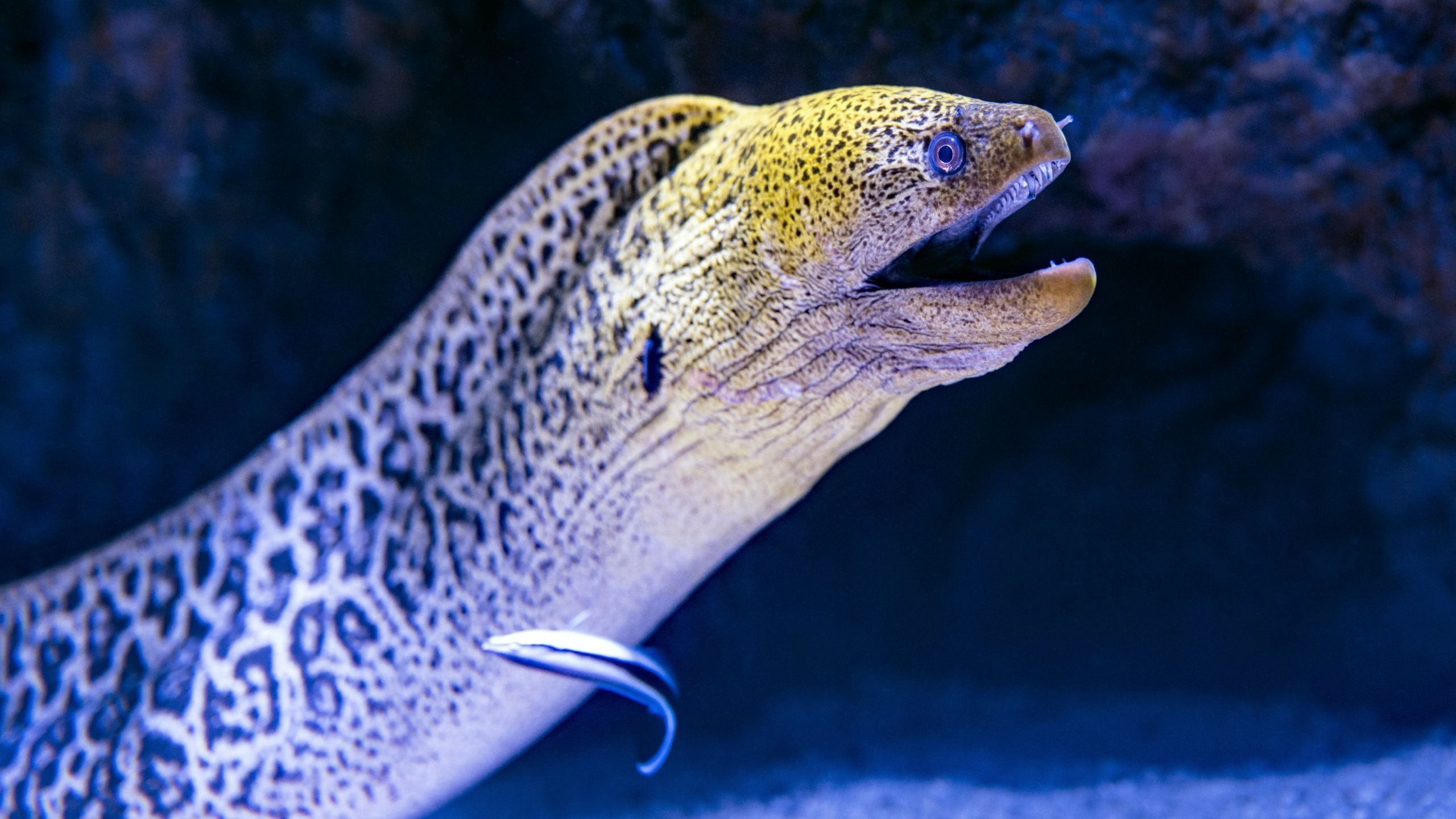Eels are fascinating creatures that have long captivated the curiosity of scientists and nature enthusiasts alike. Their reproductive habits, in particular, have remained shrouded in a certain degree of mystery.
In this article, we will delve deep into the world of eel reproduction, uncovering the intricacies of their life cycle, the challenges they face, and the efforts being made to conserve their populations.
Understanding Eel Reproduction

Eels, with their sleek bodies and serpentine grace, are creatures that have long fascinated both scientists and curious minds alike. Beyond their mysterious allure, eel reproduction unveils a captivating narrative filled with intricacies and adaptations that have evolved over millennia.
Let’s dive into the depths of this enigmatic world and uncover the secrets behind the Mysterious Life Cycle of Eels.
The Beginning: Eel Larvae in the Sargasso Sea
The epic saga of eel reproduction commences in the vastness of the Sargasso Sea, a place where these creatures begin their journey as eel larvae. It’s here, in the heart of the Atlantic Ocean, that females release their precious cargo – eel eggs – into the water, launching the first chapter in the eel life cycle.
As these eggs hatch, they give birth to what are known as glass eels. These young eels are transparent, almost ethereal in appearance. In time, they transform into yellow eels, sporting a bright and distinctive hue.
The Transformation: From Saltwater to Freshwater
One of the most remarkable aspects of eel reproduction is the ability of these creatures to adapt to a wide range of environments. While many eel species are comfortable in saltwater, others, like the European eel and American eel, make their homes in freshwater rivers and streams.
This transition from saltwater to freshwater habitats is a defining feature of eel reproduction. It is during this phase that mature eels arrive at their own breeding grounds, often covering thousands of miles to reach their destination.
Diversity of Eel Species
Eels, those enigmatic creatures of the deep, are a testament to nature’s diversity. As we explore the fascinating world of eel species, we encounter a remarkable array of adaptations and lifestyles.
Eel species can be found in both freshwater and saltwater environments, showcasing their remarkable ability to adapt. From the sleek European eel to the elusive American eel, each species has its unique characteristics.
In the Pacific Ocean, the Japanese eel (Anguilla japonica) reigns supreme. These eels are known for their resilience and adaptability, making them a vital part of the marine ecosystem.
Then there are the astonishing electric eels, which, as the name suggests, have the ability to produce electric shocks. This unique feature serves both as a hunting tool and a defense mechanism, setting them apart from other eel species.
Some eels, like the longfin eels, have ventured into the Western Indian Ocean, carving out their niche in these diverse waters. Meanwhile, the shortfin eels continue their existence in various aquatic environments, displaying the adaptability that defines the eel family.
Eels are not just diverse in their habitats but also in their reproductive strategies. The complex life cycle of eels includes external fertilization and the mysterious phenomenon of mature eels dying after spawning, ensuring the continuation of their species.
Intriguingly, eels, such as the glass eel and yellow eel, make their homes in freshwater streams and rivers, showcasing their ability to navigate between different environments during their migration.
As we delve into the world of eels, it becomes clear that these creatures have adapted to thrive in a wide range of conditions, from the freshwater rivers of Europe to the saltwater expanses of the Pacific Ocean. Their diversity is not just a testament to their resilience but also a reminder of the richness of our natural world.
A Symphony of Adaptation
Eel reproduction is a symphony of adaptation, migration, and mystery. From the depths of the Atlantic Ocean to the heart of freshwater streams, eels navigate a world unlike any other.
They survive, they thrive, and they reproduce, leaving us with a legacy of wonder and curiosity about the hidden depths of the ocean and the remarkable creatures that call it home.
The Journey to the Sargasso Sea

One of the most extraordinary aspects of eel reproduction is the epic migration they undertake from freshwater habitats to the Sargasso Sea. This journey is fraught with challenges and risks, emphasizing the remarkable adaptability and resilience of these aquatic creatures.
The Importance of the Sargasso Sea in Eel Reproduction
The Sargasso Sea serves as a critical breeding ground for eels, providing them with the necessary conditions to complete their life cycle. The warm, calm waters with abundant nutrients create a nourishing environment for eel larvae to grow and develop.
In this vast expanse of the open ocean, eel larvae encounter various other marine species, forming intricate relationships and ecological connections. These interactions play a significant role in shaping the biodiversity and functioning of the marine ecosystem.
As the eel larvae drift through the Sargasso Sea, they come into contact with a multitude of fascinating organisms. Tiny planktonic creatures, such as copepods and jellyfish, become part of the eel larvae’s diet, providing essential nutrients for their growth. These interactions highlight the interconnectedness of marine life and the intricate web of dependencies that exist within the ocean ecosystem.
Additionally, the Sargasso Sea is home to a diverse array of marine plants, including floating seaweeds and algae. These plants provide shelter and food for many marine organisms, creating a complex and vibrant ecosystem. The eel larvae, as they navigate through this rich environment, contribute to the dispersal of these plants, aiding in the distribution and survival of various marine species.
The Challenges and Risks of the Journey

The migration of eels from freshwater rivers to the Sargasso Sea is a perilous undertaking. Along their arduous journey, eels face numerous obstacles and dangers, ranging from natural predators to man-made obstacles such as dams and hydroelectric power plants.
Throughout their migration, eels encounter a variety of predators, including larger fish, seabirds, and marine mammals. These predators rely on the eels as a vital food source, and the journey to the Sargasso Sea becomes a constant battle for survival. The eels must employ their agility and camouflage to evade detection and ensure their safe passage.
Furthermore, the increasing pollution and degradation of aquatic habitats pose additional threats to eel populations. Factors such as water pollution, habitat destruction, and climate change can all disrupt the delicate balance required for successful reproduction, thereby jeopardizing the survival of eels.
Human activities, such as the construction of dams and hydroelectric power plants, also impede the eels’ migration. These structures create physical barriers that prevent the eels from reaching their spawning grounds. As a result, eel populations are declining in many regions, as their natural reproductive cycle is disrupted.
Efforts are being made to mitigate these challenges and protect the eel populations. Conservation organizations and researchers are working to restore and improve freshwater habitats, remove barriers to migration, and raise awareness about the importance of preserving the Sargasso Sea and its role in eel reproduction.
The journey of eels to the Sargasso Sea is not just a remarkable feat of endurance and adaptability, but also a testament to the interconnectedness and fragility of our planet’s ecosystems. By understanding and appreciating the challenges these eels face, we can strive to protect and conserve their habitats, ensuring the continuation of this awe-inspiring journey for generations to come.
The Reproductive Anatomy of Eels

Eels, those enigmatic denizens of our aquatic realms, have a remarkable tale to tell when it comes to their reproductive anatomy. To understand how do eels reproduce, we must explore the intricacies of their male and female reproductive systems.
Male Eel Reproductive System
Male eels are equipped with a unique set of reproductive organs tailored for their incredible journey. As they mature, they develop sexual organs that are finely tuned for their role in the reproduction of their species.
Female Eel Reproductive System
In contrast, female eels possess their own set of specialized reproductive organs designed to facilitate the continuation of their kind. These organs play a pivotal role in the process of eel reproduction, ensuring the survival of their species.
The Mysterious Sargasso Sea Connection
Eels from various species embark on extraordinary voyages to the Sargasso Sea, where the magic of spawning takes place. It’s here that female eels release their eel eggs into the water, and males fertilize them. This intriguing phenomenon of external fertilization is a defining aspect of eel reproduction.
Survival and Adaptation
Eels are renowned for their ability to navigate vast distances, covering thousands of miles during their migration to reach these spawning grounds. Their survival skills are a testament to their tenacity as marine species, thriving in both freshwater and saltwater environments.
The Unique Life Cycle
The complex life cycle of eels encompasses transformations from glass eels to yellow eels, and finally into silver eels, all of which have distinct characteristics. Notably, most eels, after fulfilling their reproductive mission, meet their end in the very waters where their journey began. This enigmatic trait sets eels apart from many other species.
A World of Eel Species
Eel populations span the globe, from the Atlantic Ocean to the Mediterranean Sea, showcasing a dazzling diversity of species, including the iconic European eel, the resilient Japanese eel, and the electric eel, renowned for its ability to generate electric shocks. Each of these eel species boasts its own unique adaptations and behaviors.
The reproductive anatomy of eels is a testament to the wonders of nature. From their distinctive sexual organs to their remarkable migrations and transformations, eels exemplify the beauty of adaptation and survival in the world’s aquatic ecosystems.
The Impact of Environmental Factors on Eel Reproduction

Environmental factors play a crucial role in the reproductive success of eels. Two significant factors that influence eel reproduction are water temperature and seasonal changes.
The Effect of Water Temperature
Water temperature has a profound impact on the growth and development of eel larvae. Cooler water temperatures can slow down their metabolism and prolong their time spent in the larval stage, potentially affecting their chances of survival.
Additionally, water temperature influences the timing of the migration of adult eels back to the Sargasso Sea for spawning. Changes in temperature patterns can disrupt this synchronization, leading to a decline in reproductive success.
The Influence of Seasonal Changes
Seasonal changes, particularly the variation in water flow and food availability, can significantly impact eel reproduction. For example, during periods of drought or excessive rainfall, the migration routes of eels can be disrupted, making it more challenging for them to reach their spawning grounds.
Moreover, seasonal changes can affect the abundance of food sources in freshwater and marine environments, indirectly impacting the growth and development of eel larvae. These ecological factors highlight the intricate relationship between eel reproduction and the surrounding environment.
Conservation Efforts for Eel Reproduction

Given the challenges faced by eels in their reproductive journey, concerted efforts are being made worldwide to conserve and protect these extraordinary creatures. Understanding the threats they face and implementing strategies to mitigate their impact is crucial for the long-term survival of eel populations.
Threats to Eel Reproduction
The decline of eel populations can be attributed to a combination of factors, including overfishing, habitat destruction, pollution, and climate change. The construction of dams and other barriers in freshwater rivers impedes the migration of eels, while water pollution affects their development and reproductive success.
Moreover, the demand for eels in certain culinary traditions has led to unsustainable fishing practices, further exacerbating the decline in their populations. These collective threats highlight the urgent need for conservation actions.
Strategies for Eel Conservation
Efforts to conserve eel populations encompass a range of approaches. These include promoting sustainable fishing practices, restoring and protecting critical habitats, and implementing measures to mitigate the impact of human activities on eel reproduction.
Conservation organizations and scientists are also working together to raise public awareness about the importance of preserving eels and their habitats. Engaging local communities in conservation efforts can further enhance the chances of success and foster long-term stewardship of these fascinating creatures.
Freshwater Eels, Glass Eels, and Freshwater Eel Differences

In the watery world of eels, there exists a fascinating interplay of life stages and adaptations that make these creatures truly remarkable. The journey from glass eels to freshwater eels is a testament to nature’s ingenuity, showcasing the intricacies of eel reproduction and the distinctions within various species, including the renowned European eel and the captivating Japanese eel.
The Enigmatic Glass Eels
Glass eels, often overlooked in their translucent beauty, are the early juvenile stage of freshwater eels. These young eels embark on their journey from the Sargasso Sea to freshwater habitats. Their odyssey across the Atlantic Ocean covers thousands of miles, a testament to their determination and survival instinct.
The Transition to Yellow Eels
As glass eels reach freshwater environments, they undergo a remarkable transformation, becoming yellow eels. Their vibrant hue distinguishes them from their earlier translucent selves. During this phase, they adapt to their new surroundings, navigating through freshwater rivers and streams.
The Silver Eels and Their Epic Migration
With time, yellow eels mature into silver eels, characterized by their silvery sheen. At this stage, they face a momentous decision—to undertake an extraordinary journey back to the Sargasso Sea for reproduction. This epic eel migration spans thousands of miles across the Atlantic Ocean, showcasing the eels’ endurance and adaptability.
Distinctive Species: European Eels vs. Japanese Eels
Within the realm of freshwater eels, two prominent species stand out—the European eel and the Japanese eel. While both share commonalities in their life cycle, they also possess distinct characteristics.
European Eels
The European eel, known scientifically as Anguilla anguilla, is a resilient species that has captured the interest of researchers for centuries. Their journey takes them from European waters to the Sargasso Sea. After fulfilling their reproductive mission, most European eels meet their end, marking the culmination of their complex life cycle.
Japanese Eels
On the other side of the world, the Japanese eel, or Anguilla japonica, follows a similar pattern. These eels embark on an impressive migration from Asian waters to the Sargasso Sea. The enigma of their reproductive ritual continues to intrigue scientists, highlighting the mysterious aspects of eel reproduction.
The Marvels of Eel Reproduction
One of the most astonishing aspects of eel reproduction is the unique strategy employed by these creatures. Upon reaching the Sargasso Sea, mature eels mate, with females releasing their precious cargo of eel eggs into the water. Males fertilize these eggs, initiating the next generation of eels.
The Bittersweet End
What sets eel reproduction apart from many species is the fate of the mature eels. After fulfilling their reproductive duty, most eels meet their end in the Sargasso Sea, a poignant reminder of the circle of life in the aquatic realm.
Diversity within the Eel Family
Eels encompass a diverse family, with various species inhabiting freshwater and saltwater environments worldwide. From the awe-inspiring electric eels, capable of generating electric shocks, to the resilient longfin eels in the Western Indian Ocean, each eel species contributes to the rich tapestry of marine life.
Conclusion
The journey to unravel the mysteries of eel reproduction continues, with scientists making remarkable progress in understanding their unique life cycle. From the remarkable journey eels undertake to the challenges they face along the way, their reproductive habits provide a glimpse into the incredible resilience and adaptability of these aquatic organisms.
By recognizing the role of environmental factors and taking concrete steps towards conservation, we can strive to protect and preserve eel populations for generations to come. How eels reproduce may still hold some secrets, but our commitment to understanding and safeguarding these fascinating creatures remains unwavering.

